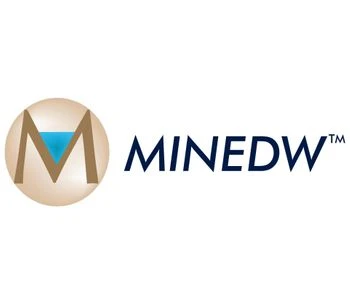


MINEDW is a three-dimensional (3D), finite-element, groundwater flow program that was developed specifically for mining applications. MINEDW is used worldwide to design dewatering or depressurization systems, predict local and regional environmental impacts of mine dewatering, assist in the design of water-supply systems, simulate the infilling of a “pit lake” after mining ceases, and estimate pore-pressure distributions within highwalls for geotechnical design purposes. Its user friendly graphical interface with pre- and post-processing functionality provides a powerful numerical modeling environment.
MINEDW is used at more than 50 mines throughout the world for mining-related applications in diverse hydrogeologic and climatic conditions.
Developed from , MINEDW was validated by Sandia National Laboratories in 1998 and has been used at more than 50 mines world wide in diverse hydrogeologic and climatic conditions.
To install and operate MINEDW, your computer must meet the following minimum requirements:
Finite-Element Grid
The grid is specified in terms of triangular prisms and facilitates representation of complex geometries and highly-variable spatial discretization, which is particularly useful for mining applications with complex geologic structures and steep hydraulic gradients.
Progressive Geometry
The elevation of nodes of the finite-element grid can be defined to vary through time. This enables more accurate representation of the underground workings and open pits according to the mine schedules being evaluated.
Saturated/Unsaturated Flow
The finite-element grid can remain fixed through time (with the exception of excavations), and the saturated flow domain can change through time in accordance with changes in the water table, further facilitating representation of the spatial hydrogeologic variability of the groundwater system without additional computational overhead of solving unsaturated flow equations.
3D Graphics
Represent geology, model domain, pit geometry, groundwater heads, and pore pressures in 3D.
Flexible Boundary Conditions
Boundary conditions can be represented as specified-head, specified-flux, and internal source-sink terms (each of which can be variant or invariant with time), or as variable-flux boundaries that simulate time-variant fluxes in response to changing boundary heads and an infinite aquifer.
Very Transmissive Zones
By defining links between specific node pairs with enhanced conductivity, very transmissive zones can be used to accurately represent tunnels, underground workings, declines, conductive faults, wells pumping from multiple layers, etc.
Groundwater/Surface-Water Interaction
Streams are simulated as river networks of hydraulic compartmentalization and the model simulates river depletions and additions from exchange with groundwater.
Evaporation/Evapotranspiration
Loss of water from bare/vegetated soils can be simulated and is proportional to the distance between the ground surface and water table, with maximum evaporation rate and extinction depth as constraints.
Pit Lakes
Excavation and pit-lake infilling of multiple pits can be simulated within the same model domain and their respective mining schedules represented simultaneously. The model also provides node-bynode fluxes into/out of the pit lake, evaporation and precipitation on the lake surface, and predictions of lake stages as a function of time, which can readily be used to predict detailed hydrodynamic and geochemical pit-lake conditions and to predict pit-wall seepage during mining.
Time-Variant Conductivity
Can be used to represent the zone of relaxation around excavations, backfilling operations, longwall and room-and-pillar coal mining, freeze-thaw conditions, or other scenarios where hydraulic conductivity may change during the simulation period.
Numerically Stable
Due in part to the finite element grid and the numerical methods applied in the model, MINEDW is typically very stable numerically. This is particularly important in cases where there is a high degree of hydraulic compartmentalization with steep hydraulic gradients.
Mine Dewatering Planning
Environmental Impact Assessment
Pore-Pressure Analysis